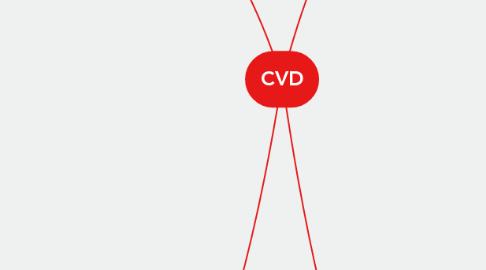
1. Did you know
1.1. The majority of CVD is caused by risk factors that can be controlled, treated or modified.
1.2. Every day, 15,000 people die from the effects of tobacco and one in every two smokers will die of tobacco-related diseases. Secondhand smoke kills more than 600,000 non-smokers every year including children.
1.3. CVD risk can begin before birth, during foetal development, and increases further during childhood, with exposure to unhealthy diets, lack of exercise and smoking.
1.4. Unhealthy diets are linked to four of the world’s top ten leading risk factors causing death: high blood pressure, high blood glucose, overweight and obesity, and high cholesterol.
1.5. Each year, physical inactivity contributes to over three million preventable deaths.
1.6. Women
1.6.1. Heart disease is the number one killer of women and more than 8.6 million women die of CVD around the world each year: that’s about one death per minute and it is more than the total number of women who die from all cancers, tuberculosis, HIV/AIDS and malaria combined.
1.6.2. Women with diabetes are at higher risk of dying from CVD than men
2. What is CVD?
2.1. Cardiovascular Disease / Heart Disease
2.2. Includes numerous problems
2.2.1. Many of them related to Atherosclerosis
2.2.1.1. Plaque builds up in the walls of the arteries
2.2.1.2. Arteries are narrowed
2.2.1.3. Harder for blood to flow through
2.2.1.4. If a blood clot forms, it can block the flow completely
2.2.1.4.1. Heart attack
2.2.1.4.2. Stroke
2.2.1.4.3. Stroke and heart attack warning signs
2.2.2. Other types of CVD
2.2.2.1. Heart failure
2.2.2.1.1. Also called congestive heart failure
2.2.2.1.2. Heart isn't pumping blood as well as it should
2.2.2.1.3. Body's need for blood and oxygen isn't being met
2.2.2.1.4. Can get worse if it's not treated
2.2.2.2. Arrhythmia
2.2.2.2.1. Abnormal rhythm of the heart
2.2.2.2.2. Various types
2.2.2.2.3. Can affect how well the heart works
2.2.2.2.4. Heart may not be able to pump enough blood to meet the body's needs
2.2.2.3. Heart valve problems
2.2.2.3.1. Stenosis
2.2.2.3.2. Regurgitation
2.2.2.3.3. Mitral valve prolapse
3. The road to a healthy heart
3.1. For Parents of Children 5-17
3.1.1. Say no to tobacco in your home
3.1.1.1. Ban smoking from your home and avoid exposing your children to secondhand smoke
3.1.1.2. Be a role model for your child and try to quit smoking if you do
3.1.1.3. Educate children on the dangers of tobacco use
3.1.2. Encourage a heart-healthy diet
3.1.2.1. Make family meals a special time to eat together
3.1.2.2. Make healthy food exciting for children
3.1.2.3. Prepare your child's lunch at home and make sure healthy options are taken to school
3.1.2.4. Ensure every evening meal contains at least 2-3 servings of vegetables
3.1.2.5. Be wary of processed foods
3.1.3. Get active and encourage physical activity
3.1.3.1. Provide children with opportunities for increased physical activity
3.1.3.2. Emphasize that it's not what they do, as long as they're physically active regularly
3.1.3.3. Create opportunities for them to be active with their friends
3.1.3.4. Limit time spent watching television and playing computer games
3.1.3.5. Lobby your governments and city planning departments to ensure that cities are developed with infrastructures that support heart-healthy children
3.2. For Adults 18-64
3.2.1. Get physically active
3.2.1.1. Even 30 minutes of moderate-intensity activity 5 times a week reduces the risk of heart disease and stroke
3.2.1.2. Remember that physical activity isn't only sport. It is any bodily movement that uses energy
3.2.2. Beware of what you eat
3.2.2.1. High dietary intakes of saturated fats, trans-fats and salt increase your risk of suffering from a heart attack or stroke
3.2.2.2. Be wary of processed foods
3.2.3. Ask the experts
3.2.3.1. If you have suffered from a heart attack or stroke, speak to your healthcare professional about the best way to treat and manage your risk
3.2.4. Know your numbers
3.2.4.1. Visit a healthcare professional who can measure your blood pressure, cholesterol and glucose levels, weight and body mass index and advice on your risk
3.3. For adults 65 years old and above
3.3.1. Beware of what you eat
3.3.1.1. Eat a balanced diet rich in fruits and vegetables
3.3.1.2. Avoid high dietary intakes of saturated fats, trans-fats and salt
3.3.1.3. Watch your weight
3.3.2. Be physically active
3.3.2.1. It is never too late to start exercising
3.3.2.2. Be as physically active as your ability and condition allow
3.3.3. Know your numbers
3.3.3.1. As you get older, your blood pressure, cholesterol and other heart-related numbers tend to rise
3.3.3.2. Visit a health care professional who can measure them and advice you on your overall risk or treatment options
3.3.3.3. Ask your doctor if you should have an ankle-brachial index test
3.3.3.4. Lower your risk by following your prescribed treatment plan
3.3.4. Say NO to tobacco and secondhand smoke
3.3.4.1. Ban smoking from your home
3.3.4.2. If you are finding it hard to quit smoking, visit a health care professional for advice
4. World Heart Day
4.1. Focus:
4.1.1. Women and children
4.1.2. Go red for women campaign
4.1.2.1. Alarm call to every woman in the world to take care of her heart health.
4.1.2.2. Why go red?
4.1.2.3. Know your risks, know the numbers
4.1.2.4. Protect your heart
4.1.2.5. Know your warning signs
4.1.2.6. Join the movement
